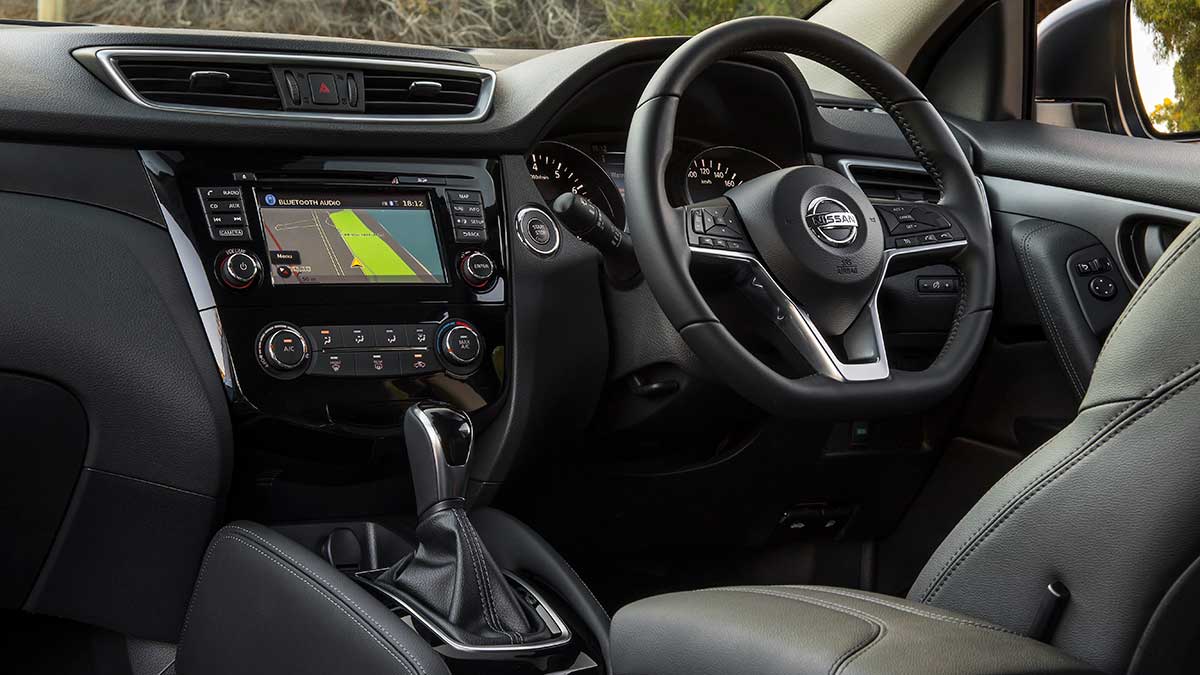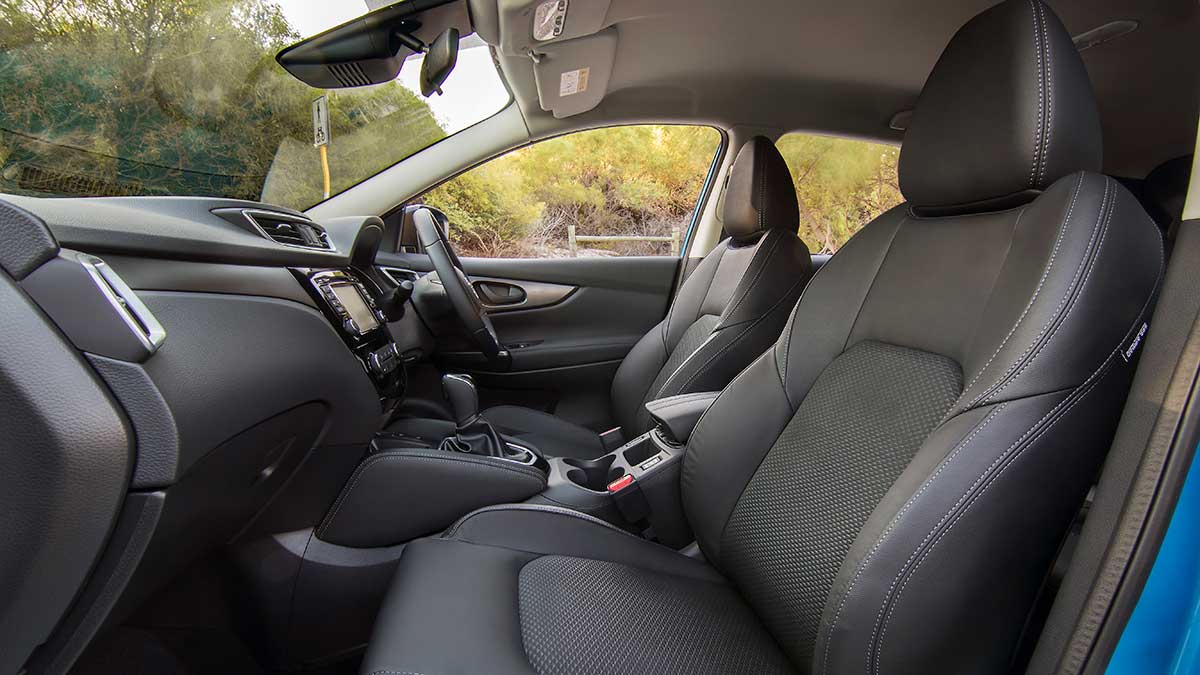The Xpeng G6 reads like a bona fide Tesla Model Y rival, but does that translate from the brochure to reality? Here we’re testing the more expensive G6 Long Range, which lives up to its name with a 570km claimed range.
Nissan Qashqai 2018 review

RACV tests Nissan's compact SUV, the 2018 Qashqai.
Compact SUVs seem to be the sort of vehicles where car companies display their flamboyance, adorning their offerings with accentuated body lines and bold colour palettes that are almost at odds with their overall corporate image. Toyota’s C-HR, the Hyundai Kona and Nissan Juke are prime examples.
Yet Nissan hasn’t gone overboard with the mid-model upgrade for its other compact SUV, the Qashqai, which now has a stylish maturity about it. Already one of the more popular models in the class, subtle changes have smartened up the styling, and it’s been bolstered with some advanced safety technology. A tweaking of the suspension and noise/vibration/harshness improvements also play their part.
In this article
Model pricing
A revamped model line-up still has the ST as the entry-level model, from $26,490 plus on-road costs for the six-speed manual version. Every other model gets a CVT automatic, starting with the ST from $28,990. Nissan has dropped the turbo-diesel version and introduced two more petrol models: the ST-L at $32,990, and a $36,490 special-edition N-Tec. The Ti model will once again top the range, but it won’t be available until mid-year, from $37,990.
All variants have autonomous emergency braking with forward collision warning, lane-departure warning, six airbags, a rear-view camera plus front and rear parking sensors. Extra highly desirable advance safety technologies, such as blind-spot and rear cross-traffic alerts, can be found on the N-Tec and Ti models. The entire range has a five-star ANCAP rating.
A touch of class
We drove the ST-L grade, which has a subtle touch of class, good use of cabin space and a practical, easy-to-live-with nature. It has several nice touches over the base model, such as heated front seats and door mirrors, electric six-way driver’s seat adjustment, digital radio, a seven-inch colour touch-screen, satellite navigation and 360-degree-view monitoring with moving-object detection.
The Qashqai cabin is one of the roomiest in the compact SUV category. It easily accommodates four adults (or five with a squeeze), with space in the back almost rivalling some medium SUVs, plus a good-sized luggage compartment.
Smart-looking seats in a combination of cloth and leather help give the cabin an upmarket feel, with the front seats providing top-class comfort and support. There is a clinical efficiency to the instrumentation and switches layout.
All-round visibility is good, although the position of the large exterior mirror on the driver’s side can cause a blind spot for shorter drivers. Split-folding rear seats extend the luggage space but a noticeable step in the floor level is created.
Performance
Carried over from the previous Qashqai, the naturally aspirated 2.0-litre direct-injection petrol engine is standard across the range, producing a handy 106kW of power and maximum torque of 200Nm. Coupled with the CVT, it provides performance well suited for driving around town and relaxed cruising on the open road, but it doesn’t have a lot in reserve.
Acceleration is a little leisurely, and when pulling up a steep incline a touch more grunt would be handy, as the engine and transmission have to work hard. This is common for basic engines in this category, but some competitors have a higher performance engine option.
Fuel economy
In normal use, it is hard to pick that Qashqai employs a CVT. Knowing that not everyone is a fan of this transmission type’s feel (and whine), Nissan has managed to mimic the behaviour of a more traditional automatic with stepped changes.
CVTs are meant to improve fuel economy, and Qashqai is capable of quite good returns, with an official fuel consumption of 6.9L/100km. Overall, our test car averaged a respectable 8.8L/100km with a best return of 7.4 litres.
Good road manners
Qashqai displays good road manners for this type of vehicle, with the suspension delivering a compliant ride and little body movement, while the handling also has a secure feel. The speed-variable electronic power steering is very light, which will appeal to some drivers for ease of parking but it doesn’t provide much road feel.
Selecting Sport mode in the steering settings increases the weighting and provides slightly more feel. Significant work has also been done to reduce noise, vibration and harshness, which makes Qashqai a much quieter vehicle, but road noise is still evident at times, and under hard acceleration traces of the characteristic CVT whine can be heard.
Nissan is lagging behind the market with just a basic three-years/100,000km warranty. Service intervals are 10,000km or 12 months, with capped-price servicing up to 120,000km.
|
Price |
Listed price: $32,990 + $3433 (est) ORC Premium paint: $495 Range: $26,490 - $37,990 |
|---|---|
|
Safety |
ESC. ABS. 6 airbags, autonomous emergency braking, reversing camera, around-view monitor, front/rear park sensors, lane-departure warning, ISOFIX fittings, daytime running lights and front fog lights. |
|
Connectivity |
Sat-nav. 7” touch-screen, bluetooth, USB input, digital/AM/FM radio and a CD player. |
|
Vehicle features |
Part cloth/part leather trim, heated front seats, split-fold rear seats, roof rails, 12V outlet and a remote window control. |
|
Driver features |
Powered driver’s seat, keyless start, fully adjustable steering column, heated and electric folding mirrors. |
|
Specifications |
Drivetrain: 1997cc, 4cyl petrol engine, front-wheel drive, CVT. 106kW@ 6000rpm, 200Nm@4400rpm. |
|
RACV rating |
✩✩✩✩ |








